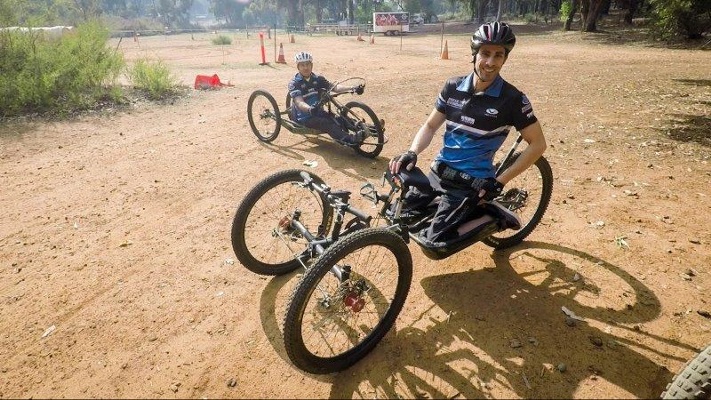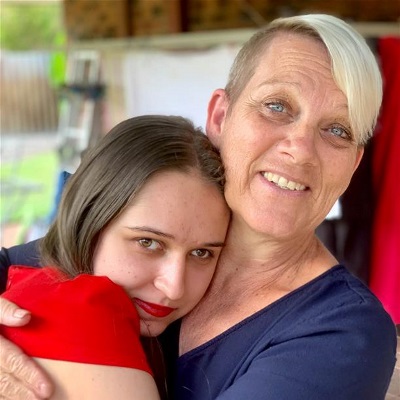AT Peer Support
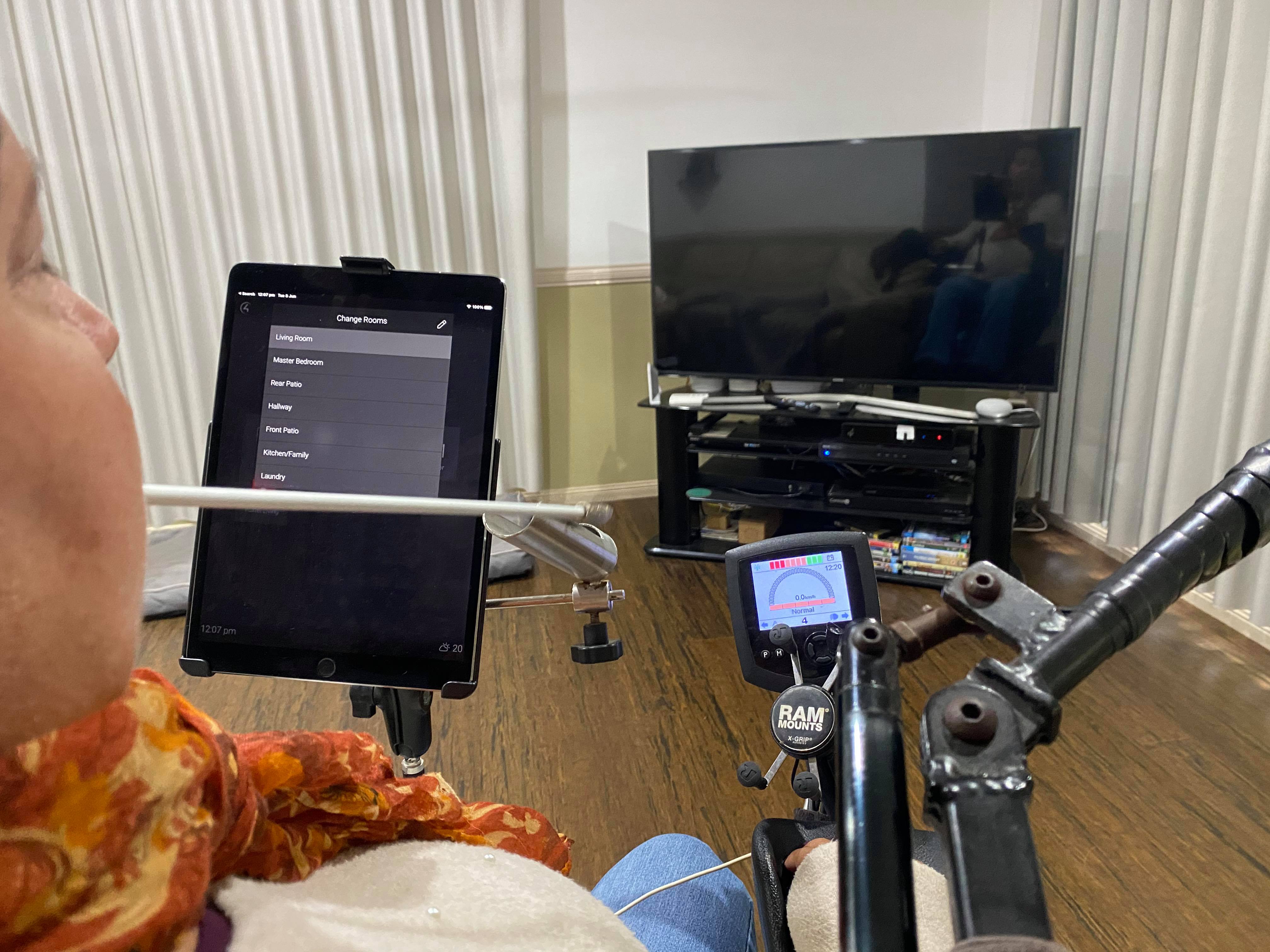
Your AT Chat Community was founded on peer-support, and learning from your peers' lived experience in how they use AT to live, play and work is what we breathe day-to-day. We asked the AT Chatters in a recent poll, “We would love to hear of a time when your peers have supported you to make an AT decision and how that assisted you.” In this Chatterbox Spotlight, we tell their peer-support stories.
Joanna’s journey
AT Chatter Joanna had an excellent peer-support experience which was a great testament to peer-led support and information. After experiencing her own access challenges, Joanna said she found help in an unexpected way.
“In 2011, before I left the hospital to move home, I wanted to find the best voice control system for my home. A previous patient with a similar injury invited me to check out her system at home,” she said.
“It was exactly what I was looking for, and I still use 10 years later. It made a massive difference to my level of independence. I am very thankful for the time she shared with me.”
Joanna told her story about delving into home automation.
Joanna said that home automation changed every aspect of her life and the independence that came with that AT could not be taken for granted. She described how the AT worked for her in her home.
“My first and main home automation is an American system called Control4. This is hardwired through the house for my lights, fans, two doors, TV and Foxtel. I used this system originally on my iPad, which is attached to my chair, and I hold a conductive pointer between my teeth to type,” she explained.
“As technology has improved and advanced over the last ten years, I can now use voice control via Alexa. With the upgrade I can use voice control for all of my automated items. This includes turning the aircon on and off and changing the temperature settings or setting a timer, turning on my front door video and opening/closing my curtains.”
“For back-up, I have Google home, just in case. Google is also easy to take away and set up on another TV if you take a chrome cast.”
"When I acquired my injury in November 2010, the iPad had only just been released for the first time in July of that year. I bought my husband one for his birthday, which he gave to me for my birthday whilst he upgraded his."
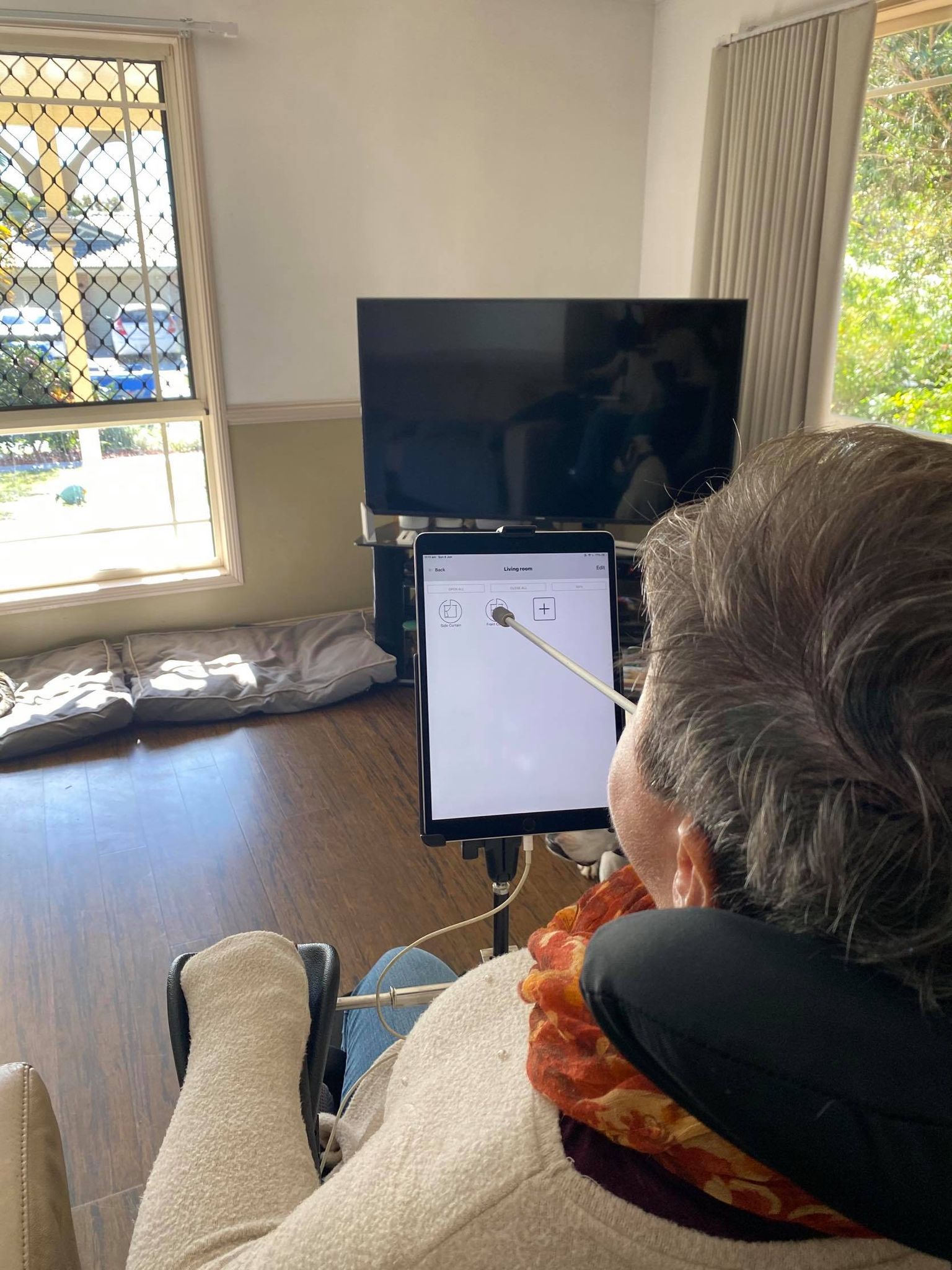
“Michael and the OT department of PA spinal helped put together the first setup for attaching an iPad to a wheelchair. We then problem-solved and found the mouth stick for me to use and attached it in a holder to the iPad,” she explained.
“This gave me hours of escape and independence, listening to music and reading books. Now I use it for everything from admin, carer rosters and invoices to shopping and home automation.”
“In 2011, smart technology was in its infancy, however it was a great relief to be able to find a way to access it. I remember going to Lifetec and checking out the automated systems they had. I burst into tears and declared that they were more disabled and antiquated than I was, and that surely they must know someone who uses modern technology.”
The value of peer-support
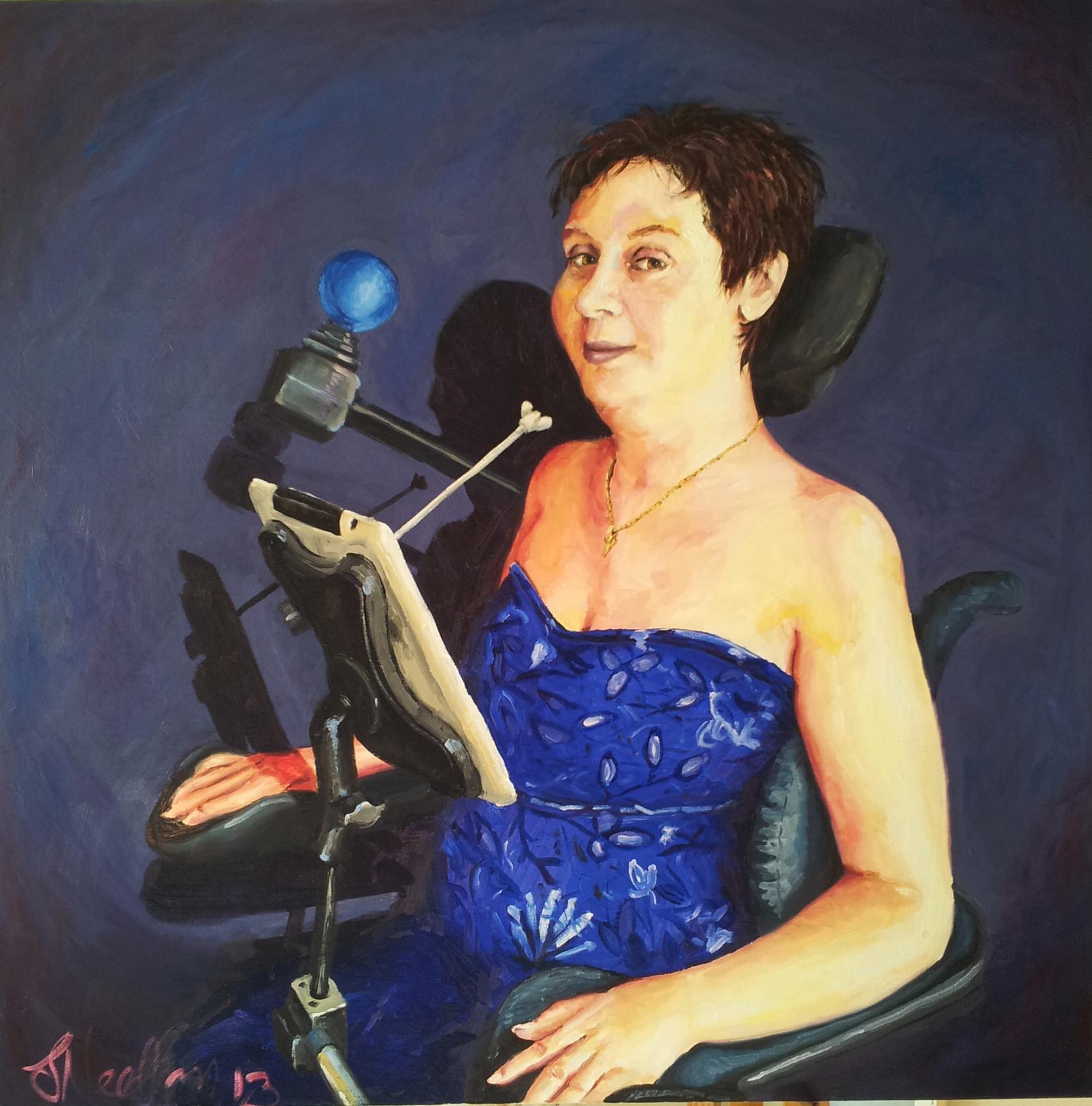
“I was then introduced to Jos Franciscus, who showed me the Control4 system which was just what I was looking for. It was the best out there at the time; however, technology has come a long way since then,” she explained.
“Google, plus other independent automation systems are more than capable. The voice automated bed came about because I always ask for more. I have an NDIS registered IT specialist that helped set up the rest of my home automation.”
“On my wish list was curtains, air-con and a bed on voice control. I was very surprised and pleased when he said he could organise the bed for me. You soon take for granted the independence of home automation, then you go for a short stay away and appreciate it all over again.”
To the left is a painting of me using my iPad attached to my chair in 2012. Jos Franciscus had the painting commissioned along with about five others, for the PA spinal unit.
Joanna’s featured AT:
• BroadLink helps link most of my voice automation. This is cool because I can adjust my bed via voice control.
• I have an original C4, control4 system, using an iPad to work the TV and Foxtel, which can also work lights, fans, garage doors and house doors. Alexa links for voice control.
• I can open the front door using my chair’s chin control. I can also use C4 on the iPad, or voice control from my bed via Google/Alexa.
• Ceiling fans which were originally controlled by C4 using an iPad, can now be operated using voice control with Google or Alexa.
• Before I upgraded to my curtains, I had a system fitted to my blinds, which you can read more about here.
Video description: A lady uses her original C4, control4 system, using the screen mounted to her wheelchair to open and close the house doors.
Video description: A woman seated in her wheelchair in the lounge room uses her AT chin control system through her iPad which is mounted to her chair. She accesses the TV through the apps as she moves through the options.
We heard from another AT Chatter, Maree about her experiences with the AT Chatterbox group and the recommendations she received which she said led to numerous purchases including cookware, adaptive clothing, Wonder Sheets and Bedezy.
“I have purchased a number of items that have been mentioned or recommended on this site. It's great to have reviews from peers that have similar issues and I think this shows best practice and supporting evidence when purchasing items with your plans,” she said.
“For items that may be seen as 'everyday items', I keep screen shots of recommendations with my receipts for auditing purposes.”
Dy's Hoist:
One of our new Chatterbox Members Dy told us about her experience with a ceiling hoist and being unable to access services and suppliers in the traditional way.
“I have a Ceiling Hoist that I can operate without any help. My Physiotherapist had a couple of clients trial it with their Occupational Therapist (OT) in my home,” she said.
Dy said the clients she worked with asked her about her experiences using the hoist.
“I demonstrated how to use the hoist first. Two of my support workers were OT students, so they filmed a short video with me using it which is now shown to the 4th year University classes.”
“I am very fortunate to have a fantastic OT who had seen the hoist at an ATSA Expo. It was temporarily set up at a local wheelchair/equipment supplier, so my OT jumped at the opportunity to trial it. We applied to NDIS, and it was approved within a couple of weeks.”
Dy said she could empathise with others who faced AT challenges and how to get equipment to meet their needs.
“It's disappointing that the company haven't made it accessible to more stockists. There are no suppliers or distributors in the city I live in,” she said.
“I personally haven't had any challenges getting any of my AT. The challenge is for others having access to trial equipment like my ceiling hoist. Before I got my ceiling hoist, I needed support workers morning and night to help me into bed and up in the morning.”
“It's common for Allied Health students to work part-time as support workers with local providers and this is how I found the OT students to support me.”
Dy said having the hoist and using it independently had been a game-changer for her everyday living.
“Getting the hoist made a huge difference. I can choose to get up or go to bed anytime I like. My hubby is a shift worker with an irregular start/finish timetable. He also races cars and can be away up to a week at a time. I'm often home on my own. Having this HandiMove has also made it possible for him to keep working and to continue with his interests. I am 59-years old, full-time Powerchair user and unable to weight-bare. This is the hoist I use in my home.
Below is a short clip of my HandiMove ceiling hoist in action.
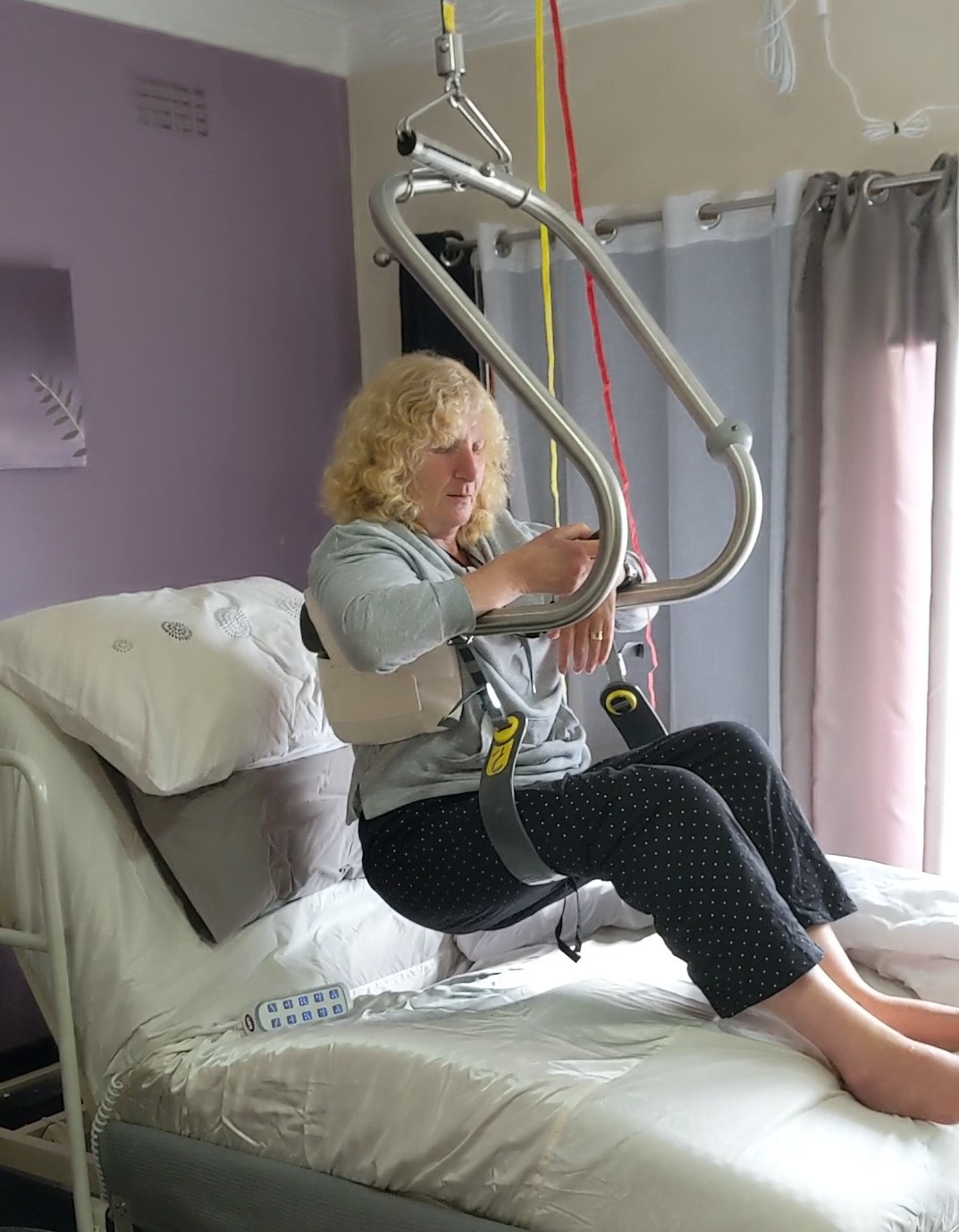
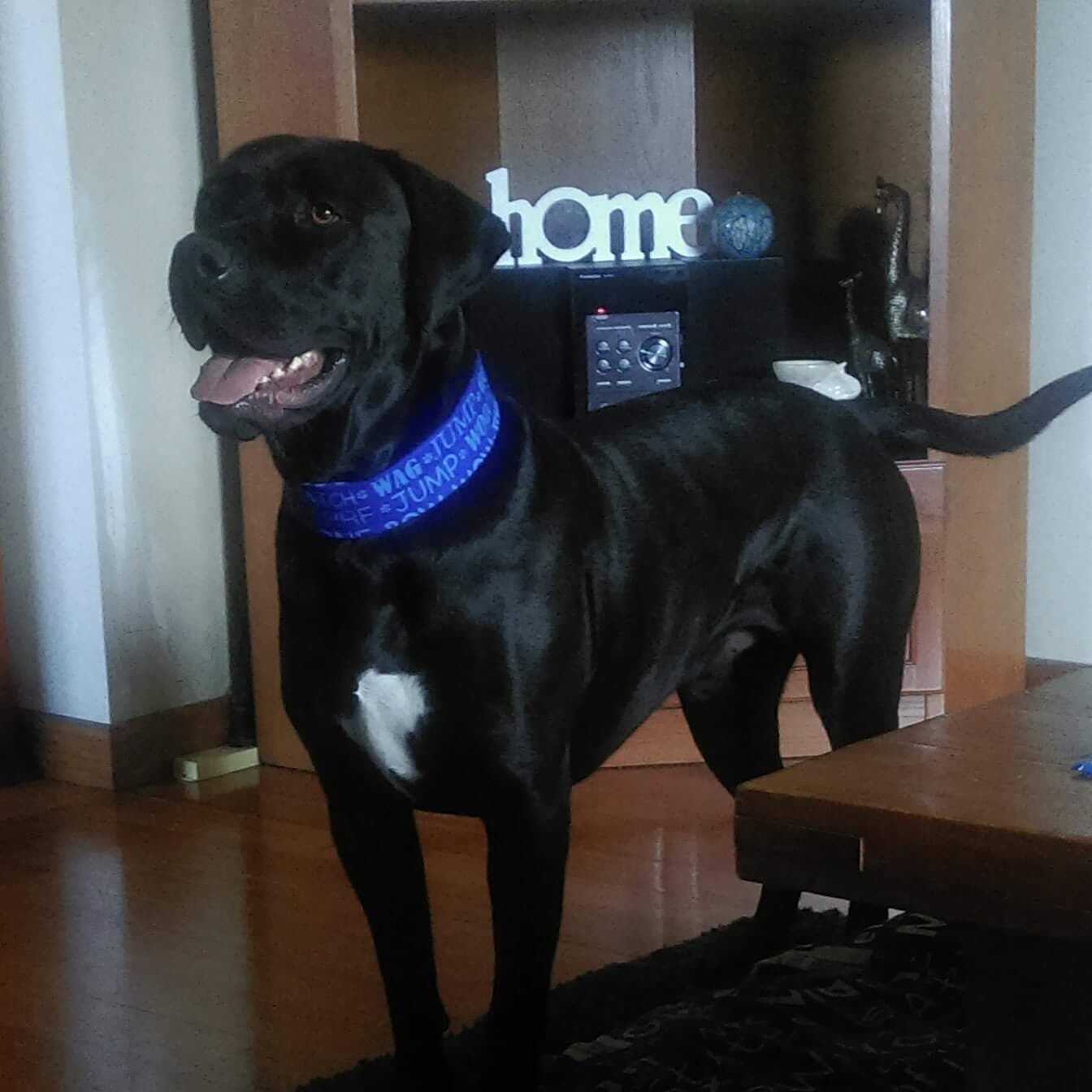
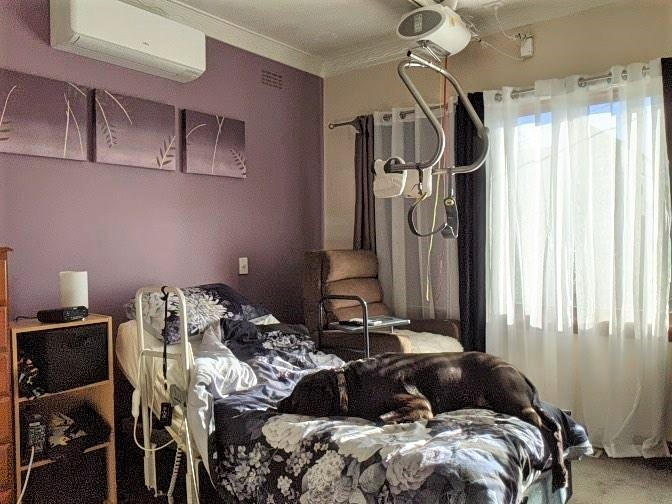
Video description: A lady demonstrates the use of her ceiling hoist in her bedroom as she moves from the chair to the bed.
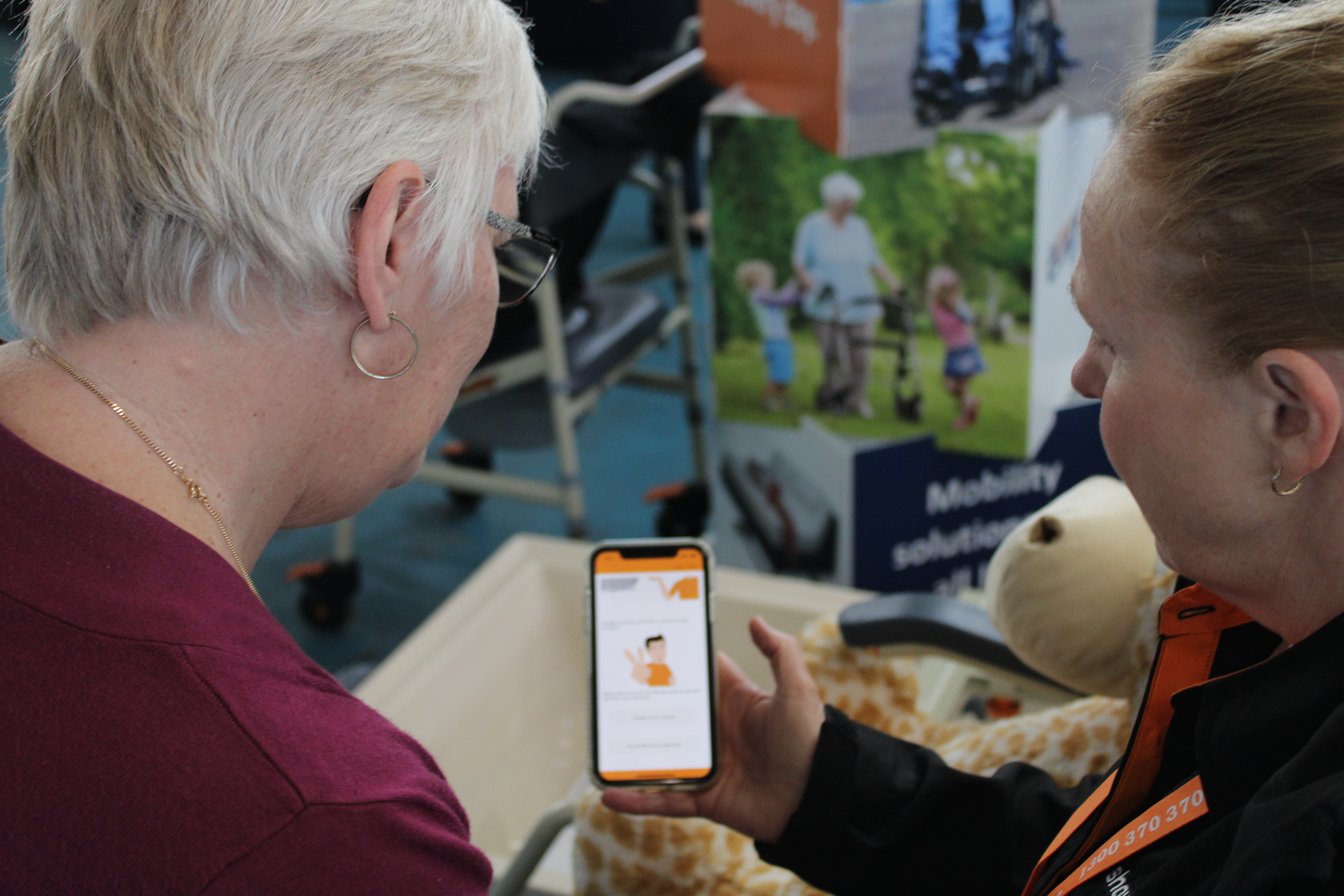
AT Chat with Pat
One of our valued Chatterbox Members, Pat had some useful contributions through her many peer-supported decision experiences. She had too many to name from the insights she had gained from the group. Pat told us about her experiences with peer-led guidance.
“My first query was about a way to get washing easily from my laundry to the line. I needed something sturdy, that held a washing basket and had swivel wheels to turn corners easily,” she said.
“I was given some great ideas from the group including detailed instructions on how to modify a Bunnings laundry trolley to have swivel wheels. The Clax scout trolley is an option if you don't need to weight bear on the trolley. Then I discovered that I had the solution all along in the form of a secondhand walker,” she explained.
“I can weight bear on the walker, it has swivel wheels and holds my washing baskets at a good height. I can wheel this from inside to outside and attach a reaching device to the side of it. I also use this for grocery deliveries.”
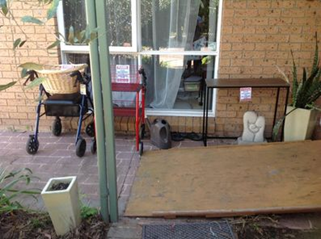
“Someone suggested having a table set-up for grocery deliveries at the beginning of Covid-19. This sparked the solution I'd been looking for for deliveries (I can't pick them up off the ground). A metal hall table now sits beside my ramp at the door to collect deliveries and is a convenient hand-sanitising station for Covid.”
Pat also shared with us another hack she had learnt when preparing food.
“I usually do the preparation in bed when I don't have support workers helping, but using the trolley to move it was a simple but very helpful idea. I can then prepare, and rest as needed,” she said.
Peer-led information is what we do in the AT Chat community. If you have a great peer-led informed decision or something you want to talk about with your community, get in touch and we can tell your story, your way.
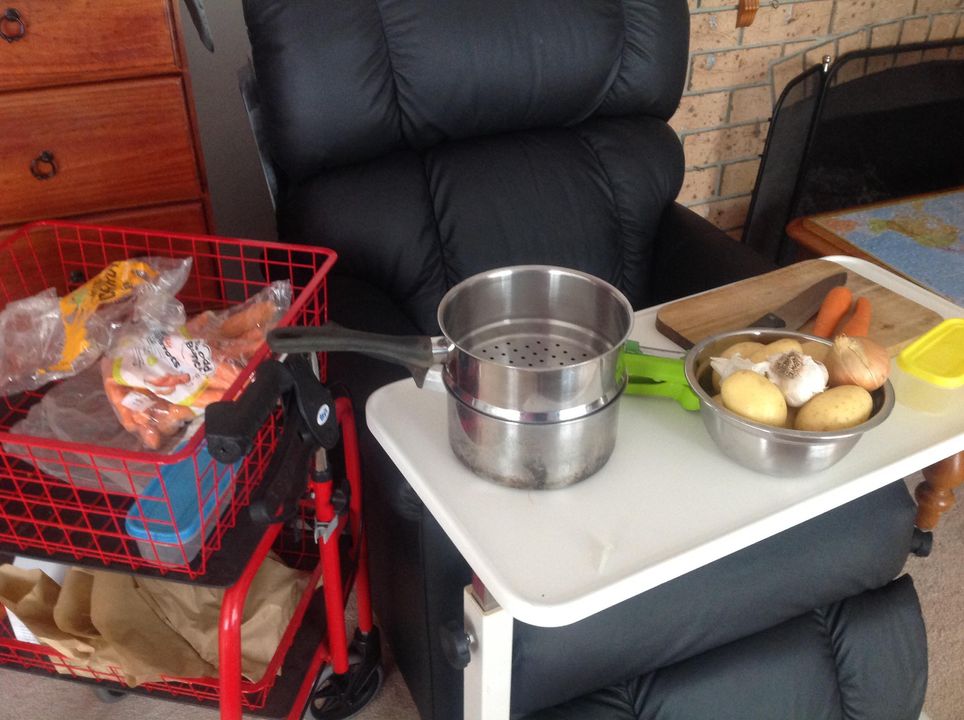
Our Facebook group Chatterbox is open to all assistive technology (AT) users. If you would like to join the AT chat to share your experience and connect with your peers about an AT solution please follow the link below and join this amazing community.


